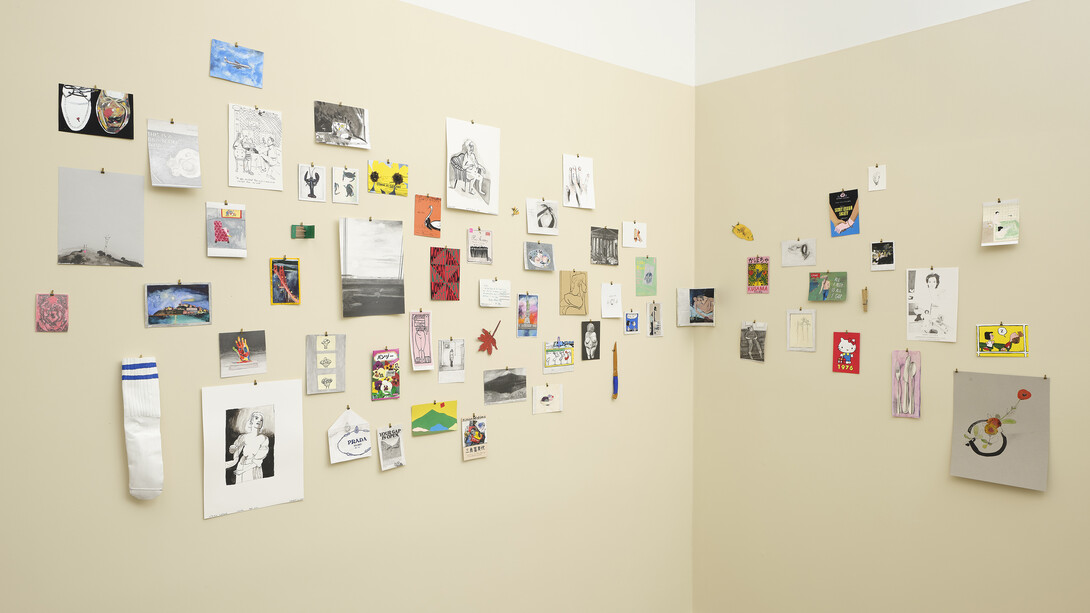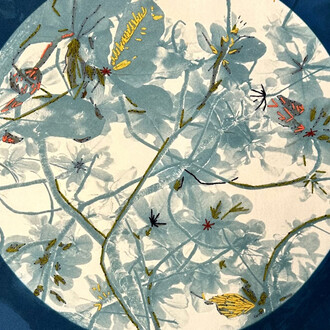Anthony Meier is pleased to announce Libby Black’s (b. 1976, Toledo, OH) first solo exhibition with the gallery, featuring the artist’s signature sculptures alongside the debut of her largest watercolors to date. This presentation offers a wide-ranging view of a celebrated Bay Area artist whose work intertwines personal biography and lived experience with broader cultural and political narratives to transmit critical histories.
For over two decades, Black has worked across drawing, painting, and sculpture to develop a tactile language that foregrounds the material, political, and emotional dimensions of the everyday. Best known for her sculptures—rendered in paper, paint, graphite, and hot glue—she transforms familiar objects into portals that reveal the intersections of personal memory and collective cultural meaning.
Extending Black’s artistic inquiry, this exhibition marks the gallery debut of Black’s watercolor practice. Inspired by her travels to Japan, these intimate paintings depict butterflies, lilies in stages of bloom and decay, and dew-laden flora. Set against washes of blues, greens, and yellows, kinetic, incisive brushstrokes flare with bright reds and orange capturing fleeting moments of transition. Evincing both the ephemeral and the in-between, each scene imparts a delicate record of feeling and time that can be sensed but never held.
While her watercolors explore impermanence, Black first gained recognition for uncanny sculptural approximations of domestic and luxury objects, transforming the material world into reflections on desire, value, and representation. For this presentation, a life-size sculpture of a violin case patterned with Goyard’s iconic chevron, propped atop a milk crate, revisits this history to evoke both aspiration and the imprints of personal experience. Nearby, a red-pink ladder leans against the gallery wall, its rungs bearing a striped gym sock, a periodical on weeds, and a single red leaf, elevating a household object into a metaphor for ascent, transition, and the interplay between the mundane and the symbolic.
Meanwhile, Black’s sculptural recreations of books and periodicals—a recurring thread first introduced in the artist’s life-size re-creation of a Kate Spade store, of which included an Andy Warhol book—extend the artist’s researched yet intuitive inquiry into the systems and symbols that shape our lives. Over the years, these hollow, hand-built volumes have evolved into an ongoing series, reanimating art history through a feminist perspective to foreground alternative knowledge-making, experimentation, and counter-histories.
For this exhibition, Black presents new open-faced recreations of texts by groundbreaking women artists: a Kiki Smith monograph marked with a library circulation barcode; Dorothea Lange’s “Words & Pictures” opened to the artist’s charge, This is your country, don’t let the big men take it away from you; and the catalogue for the Ruth Asawa Throughline, the first exhibition devoted to the artist’s lifelong drawing practice. Displayed together on a central plinth, these three-dimensional objects combine to form an embodied library, bringing the source material closer to the viewer to animate new readings of feminist legacies.
Anchoring the exhibition, a constellation of references drawn from Black’s personal archive— reimagined through watercolor, acrylic, ink, pencil—culminates in a living collage. Meticulously crafted by the artist, painted and sketched postcards, flyers, fashion ads, portraits of female musicians, and fragments of other artists’ work echo the familiar forms of print and media. Brought together, they shed light on the porous boundaries between biography, pop culture, and art history, each item serving as an invitation into Black’s dialogue between the personal and the political, the ephemeral and the monumental, making space for the reconsideration of the everyday as a site of hidden significance.












